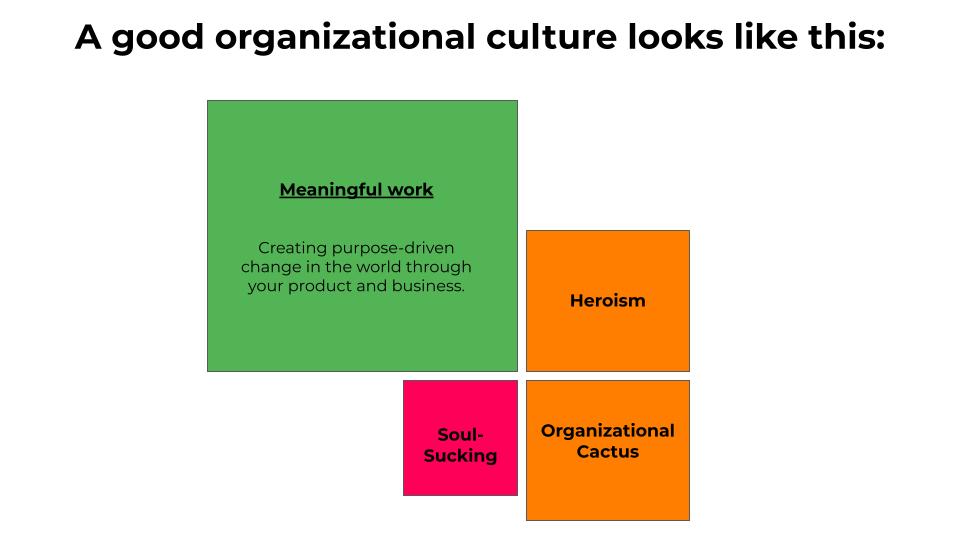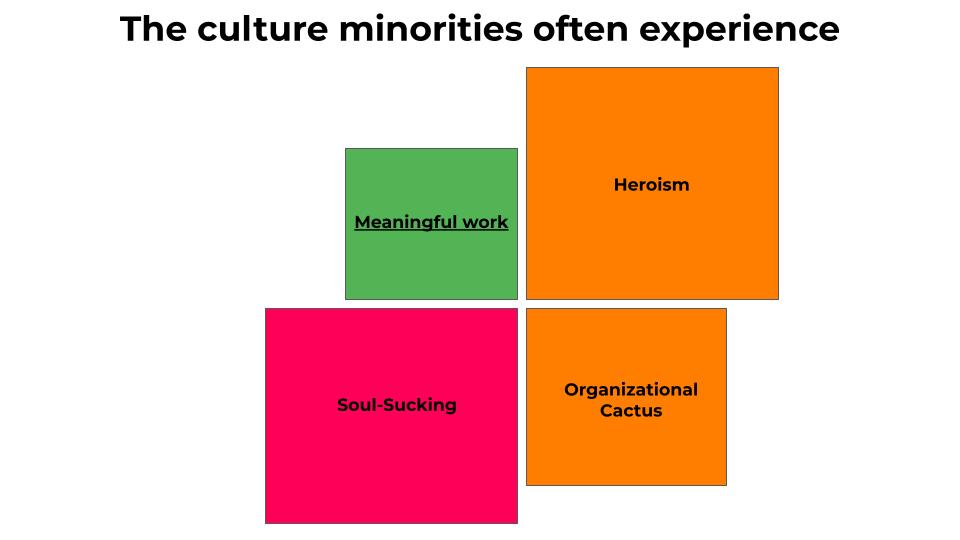“Learning from mistakes is overrated,” according to the co-founders of Basecamp who wrote the New York Times bestseller Rework. Instead you should be “learning from your successes.” In a book written by tech bros for tech bros, Jason Fried and David Heinemeier Hansson offer a glimpse into why many women and people of color have left Basecamp over the years.
If only Fried and Hansson had looked beyond their successes to learn, they could have avoided an implosion at Basecamp in which 30% of employees quit en masse.
First, some background
As reported in The Verge, some customer service representatives at Basecamp had kept a controversial list of “funny names” since 2009 that was both inappropriate and racist. A decade later employees wanted Fried and Hansson to reckon with this and address the lack of diversity and inclusion in the workplace more thoughtfully.
But satisfied with a superficial approach to diversity, the founders decided that the discussion many employees were asking for was “a major distraction.” What started as a campfire that could have been conducive for productive discussions, became a firestorm when Fried and Hansson announced a new policy: “No more societal and political discussions on our company Basecamp account”.
At the end of an open letter, Jane Yang, an employee at Basecamp announced her resignation articulating the impact of the company’s policy on marginalized employees:
[Such policies] in my opinion force the most marginalized employees to continue to disproportionately bear burden at work because we do not have the luxury of being able to compartmentalize our existence.
Jane Yang, ex-employee at Basecamp
Understanding the impact of this policy on culture
The culture you experience is the sum of your experiences during your workday. Every activity you undertake in your work day can be rated on two dimensions: How satisfying or depleting it is, and whether it feels urgent or not. The Radical Product Thinking rubric for culture helps you visualize this as follows:
 The Radical Product Thinking Culture Rubric
The Radical Product Thinking Culture Rubric
Everyday you engage in activities and interactions that can be categorized into the following quadrants:
-
Meaningful work: This is work that is both satisfying and not urgent. Your activities fall in this quadrant where you feel like you’re:
- Contributing to a purpose
- Valued for your contributions
- Able to trust your colleagues and have psychological safety
- Heroism: This work is satisfying but urgent - it adds excitement to your day but too much of this leads to burnout. You’re in this quadrant when you’re:
- Overwhelmed with the amount of work you have
- Firefighting
- Having to prove your worth at work
-
Organizational Cactus: This work is depleting but urgent - this is the paperwork that helps an organization function but too much of this feels painful. Examples include:
- Dealing with bureaucracy and writing TPS reports
- Asking for permission on small decisions
- Creating reports on useless metrics
- Soul-Sucking: Work in this quadrant is depleting and not urgent, akin to a slow-growing cancer. You’re in this quadrant when you feel like you’re:
- Self-censoring to avoid repercussions of speaking up
- Managing up
- Dealing with unfair practices
The policy of banning societal and political discussions increases the size of the Soul-Sucking quadrant. It requires employees to self-censor - if practices feel unfair, they cannot speak up and engage in conversations that would lead to improvements in the company.
What a good culture looks like
A good culture maximizes activities in the Meaningful Work quadrant while minimizing the other three. Visually, a good culture would look like this:
 A good organizational culture maximizes the Meaningful Work quadrant and minimizes the others
A good organizational culture maximizes the Meaningful Work quadrant and minimizes the others
When you look at culture through these quadrants, you realize that every employee may be experiencing your organizational culture differently. For example, if you have a boss who’s feeling threatened by you, you may be spending more time in the Soul-Sucking quadrant than your colleagues. Culture is not a monolithic experience across the company.
Once you recognize this, you can see that marginalized employees experience a culture that often looks like this:
 Marginalized employees often experience a disproportionally large Soul-Sucking quadrant
Marginalized employees often experience a disproportionally large Soul-Sucking quadrant
In a workplace that’s not inclusive, it’s harder to feel like you belong. It’s often harder to be heard and for your contributions to be recognized - as a marginalized employee, you spend more time in the Soul-Sucking quadrant. To overcome the bias around you, you have to work harder to prove your worth - you spend more time in the Heroism quadrant. The same biases often result in your getting fewer responsibilities and you may spend less time in the Meaningful Work quadrant.
A workplace with a large Meaningful Work quadrant presents real benefits. According to a 2019 study by Betterup, high belonging was linked to a 56% increase in job performance, while being excluded caused individuals to give less effort to the team.
Engineering a good culture
You can engineer a good culture to reap these benefits using the following three steps:
1. Start with a clear vision for a culture that works for all
Diversity is not a vision. As Janice Burke, ex-employee of Basecamp articulates in a brilliant post, “The ambiguous nature of diversity means it can be interpreted in a number of different ways” It’s is a difficult word to put into action.
You need a clear vision for the culture you want. A detailed vision for culture can be that you want to create a good culture for ALL (i.e. the visual representation of a good culture shown above should be what everyone at work experiences).
2. Engage in conversations to understand your existing culture
Instead of shutting down conversations, you need to engage employees in understanding how they’re experiencing your work culture. Identify the activities in the three danger quadrants that are affecting employees the most.
This will require having honest and uncomfortable conversations. A good guide for having these discussions is Mary Frances Winters’ book: Inclusive Conversations: Fostering Equity, Empathy, and Belonging across Differences. It’ll be important to make sure you’ve heard all voices in the company, including marginalized employees. To accomplish this, you may also need to use anonymous surveys.
Step 3: Create an actionable plan and measure progress
Once you understand which activities are taking time away from the Meaningful Work quadrant, create an actionable strategy on how you can address those problems.
As you implement initiatives to improve your culture, evaluate if your approach is working using regular (but brief) surveys. Just like you’d measure if your product is successful, you can measure if your strategy to create a better culture is working.
Learning from Basecamp’s mistakes
By creating a workplace where people feel like they belong, you can increase employee engagement and performance. This doesn’t happen by creating policies that shut down conversations. Instead, it requires listening and thoughtfully creating an inclusive culture. You can treat culture as a radical product - it means starting with a clear vision for change and systematically translating it into action.
Learn more about how you can build vision-driven products in Radical Product Thinking: The New Mindset for Innovating Smarter.
